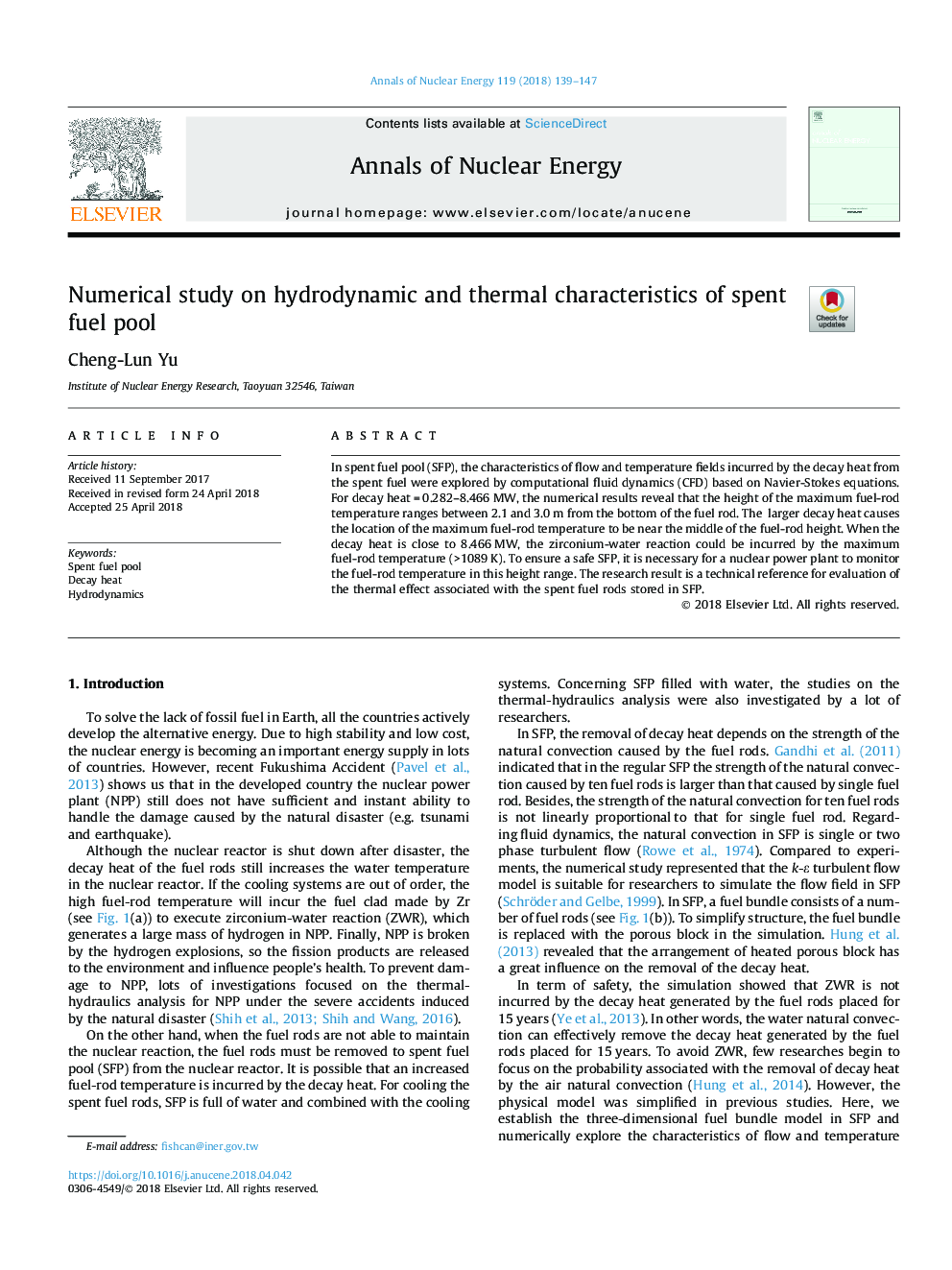| Article ID | Journal | Published Year | Pages | File Type |
|---|---|---|---|---|
| 8066913 | Annals of Nuclear Energy | 2018 | 9 Pages |
Abstract
In spent fuel pool (SFP), the characteristics of flow and temperature fields incurred by the decay heat from the spent fuel were explored by computational fluid dynamics (CFD) based on Navier-Stokes equations. For decay heatâ¯=â¯0.282-8.466â¯MW, the numerical results reveal that the height of the maximum fuel-rod temperature ranges between 2.1 and 3.0â¯m from the bottom of the fuel rod. The larger decay heat causes the location of the maximum fuel-rod temperature to be near the middle of the fuel-rod height. When the decay heat is close to 8.466â¯MW, the zirconium-water reaction could be incurred by the maximum fuel-rod temperature (>1089â¯K). To ensure a safe SFP, it is necessary for a nuclear power plant to monitor the fuel-rod temperature in this height range. The research result is a technical reference for evaluation of the thermal effect associated with the spent fuel rods stored in SFP.
Related Topics
Physical Sciences and Engineering
Energy
Energy Engineering and Power Technology
Authors
Cheng-Lun Yu,
